Desktop with Core i5 consumes only 5.9 W in idle mode

Dutch amateur engineer Emil 'Mux' Neissen (Emile Nijssen) for several years engaged in the optimization of power consumption on motherboards. For example, in 2010, he assembled a full-fledged MiniITX / Core 2 Duo computer that consumes only 20 watts, last year he made a desktop Core i3 with a consumption of 8.3 watts .
The new project Fluffy2 - Core i5-3570K with 16 GB DDR3-1333 memory, WiFi module, SSD 64 GB, consumes only 5.9 watts instead of the original 11.6 watts. Neissen himself uses it as his primary home computer.
Optimization plan (the motherboard is ready, you need to find a suitable monitor and case):
')
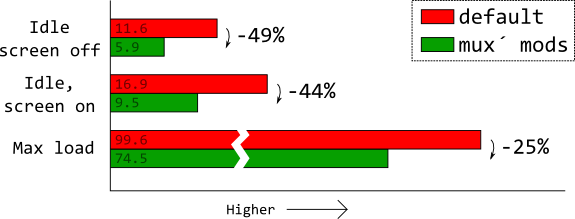
Note: A typical PC is in standby mode about 95% of the time.
To achieve such a result, firstly, you need to correctly approach the choice of components. Neissen publishes an indicative list of which components are preferable from which manufacturers and which ones should be avoided for the sake of minimum power consumption. For example, he recommends a motherboard from Intel or MSI from the lower-middle price range, any memory can be used.
Neissen views every component in the electrical circuit as a source of energy loss - and removes everything unnecessary from the motherboard: SATA ports, LEDs, unnecessary voltage regulator modules (VRMs), and so on, minimizing energy loss without sacrificing functionality. As an illustrative example, one can cite two electrical circuits from his past project Core i3 : the original circuit and after the removal of unnecessary components.
Before:
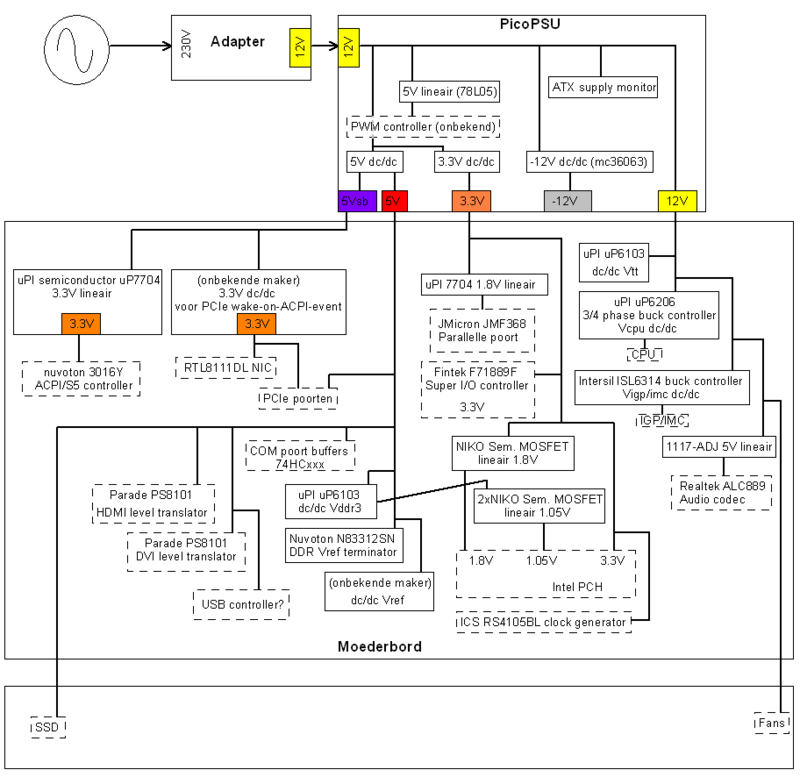
… and after:
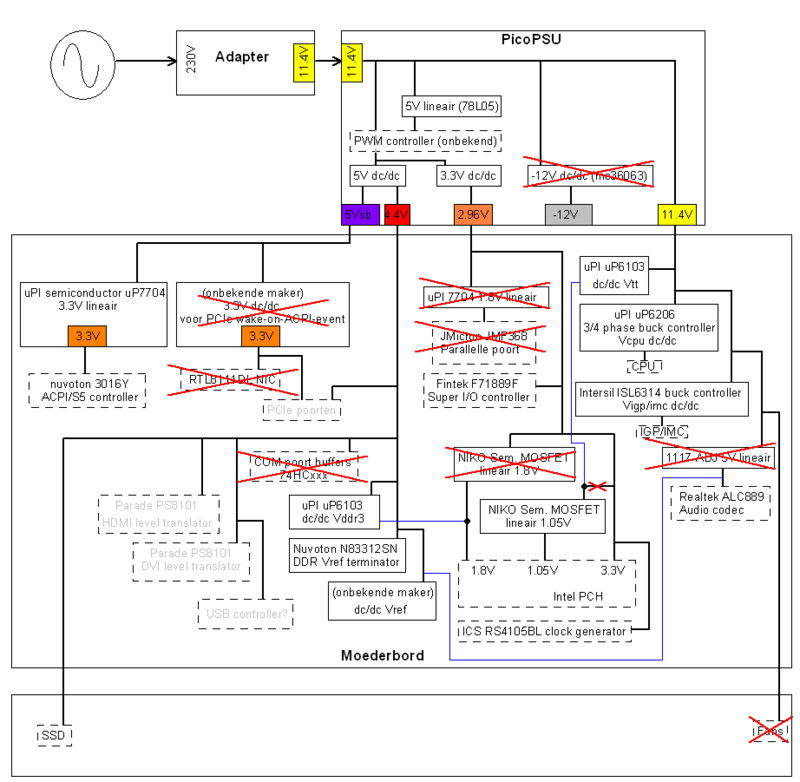
Here is the original Intel DQ77KB motherboard wiring diagram that the engineer is working on now.
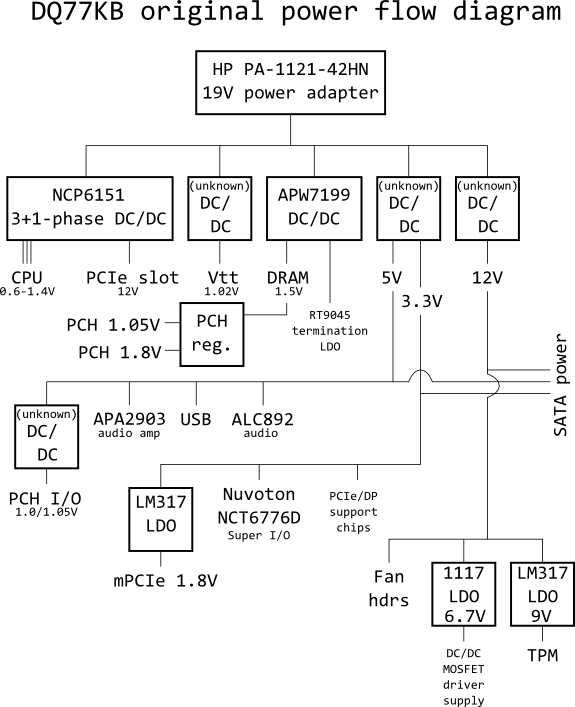
Neissen measured each circuit with a voltmeter on the circuit and made up a diagram for himself, how power is consumed for all components in sleep mode.
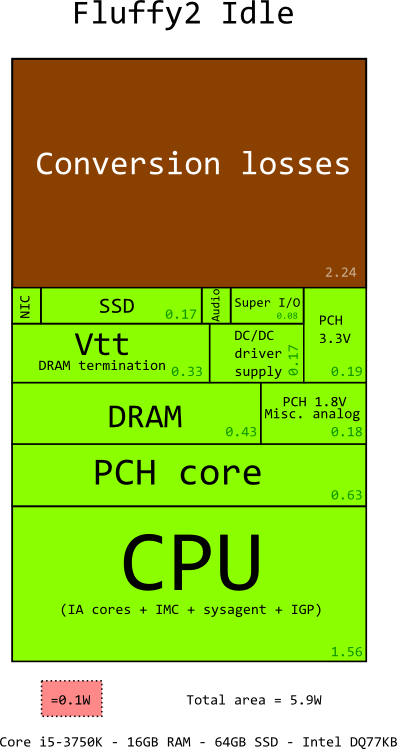
After optimization, the system consumes only 5.9 W instead of the original 11.6 W, that is, almost two times less. At maximum power, the computer consumes 74.5 watts instead of the original 99.6 watts.
Ideally, a compact computer with low power consumption can be attached to the back of the monitor - and carry it with you by the handle. The system will look something like this (3D-rendering by Neissen):
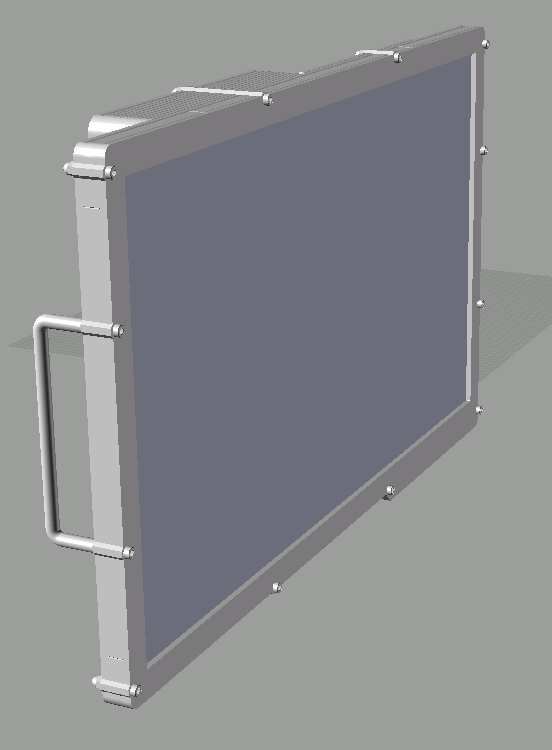
Self-made battery for it, made of battery cells of the laptop.
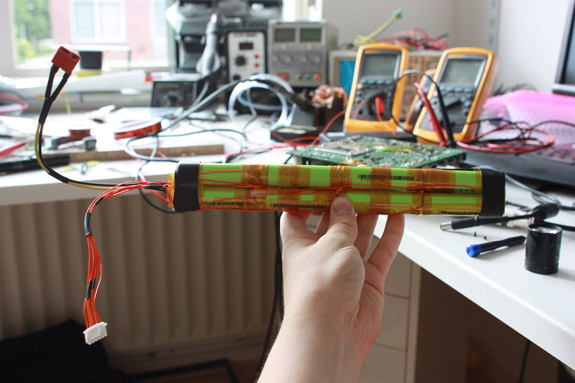
PS Jobs Fluffy2 is participating in an energy efficiency competition organized by the Dutch bank ASN. If Fluffy2 wins the competition, the author promises to organize a commercial release of such computers. Maybe he will claim Kickstarter.
Source: https://habr.com/ru/post/151252/
All Articles